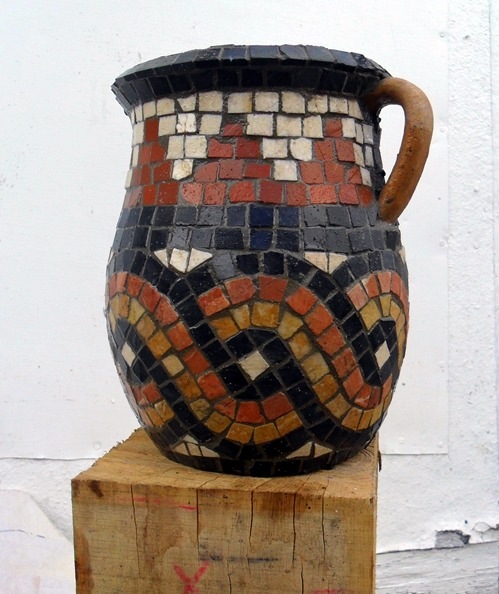 Loading... Please wait...
Loading... Please wait...Knowledge
Newsletter
Mosaic Tools
Mosaic Tools
|
There are not a lot of tools required for mosaics. You need a tool to cut the tesserae and a tool to place it on the mosaic. Since antiquity, the most satisfying tools for accurate cutting of glass smalti, stone and marble have been a mosaic hammer and hardie. Although those same tools are still in use today and remain the preference of professional mosaic artists, other tools are also in use such as chopping machines and nippers. Whether you choose the hammer and hardie method or the nipping method, it is important to choose a quality tool. For the hammer and hardie, this is easier because the tools on the market are almost always imported from Italy and are specifically made for professional mosaicists. This isn't always the case with nippers. A nipper that works for stained glass may not work for smalti. To be sure, we recommend you purchase the Leponitt or Montolit brands for both glass smalti and stone. Use a wheeled blade nipper for glass, straight blade nipper for stone. In addition to a cutting tool you will also need a set of tweezers for placing the tesserae. It is also helpful to have a set of picks to move tesserae around and to clean your mosaic. At the bottom of this page, you will find some excellent videos showing the proper use and handling of both the hammer and hardie and well as the wheeled and straight blade nippers. |
|
|
Need to sharpen your tools? If you are not sure how to do so, we recommend having this done by a professional sharpening service. This is particularly true for carbide tools. While carbide is much harder than steel, it is also brittle and can more easily break. If you do sharpen your tools, here are some important tips to keep in mind: If you want to understand the sharpening process, to the right is a good video that specifically covers carbide tools but is relevant to all tools |
|
|
|
|
Need to tighten the handle on your hammer? As a temporary solution, you can do so by soaking the head portion of the hammer in a bath of water for 10-15 minutes. This will swell the wood fibers. Don't place any more of the handle than is necessary to cover the head in the water. Once the wood fully dries, the handle will likely be loose again. For a more permanent solution, you can drive the steel wedge further into the top of the hammer. We also sell in our online store a hammer handle tighter. In addition to swelling the wood, it will also lock the swelled wood in place so that over time, the handle doesn't shrink again.
|
Extending the Life of Your Wheeled Nippers If you are using wheeled nippers, the blades are replaceable. However, you can greatly extend the life of the cutting wheels by putting a small mark on each wheel that indicates the current cutting edge. Then, when that edge goes dull, loosen and slightly turn the wheel and make another mark. Given that only about a millimeter of the blade is actually involved in the cutting process, you can turn the wheel many times before you need to replace it. For turning the wheels on the Montolit nippers, the bolt requires an 8mm wrench. If you lose your spring, we do sell replacements in our online store. You can also get a spring at most hardware stores - ask for a #8 compression spring. |
| Using a Mosaic Hammer | Using Wheeled Nippers |
|
Using Straight Nippers |
|
 |



